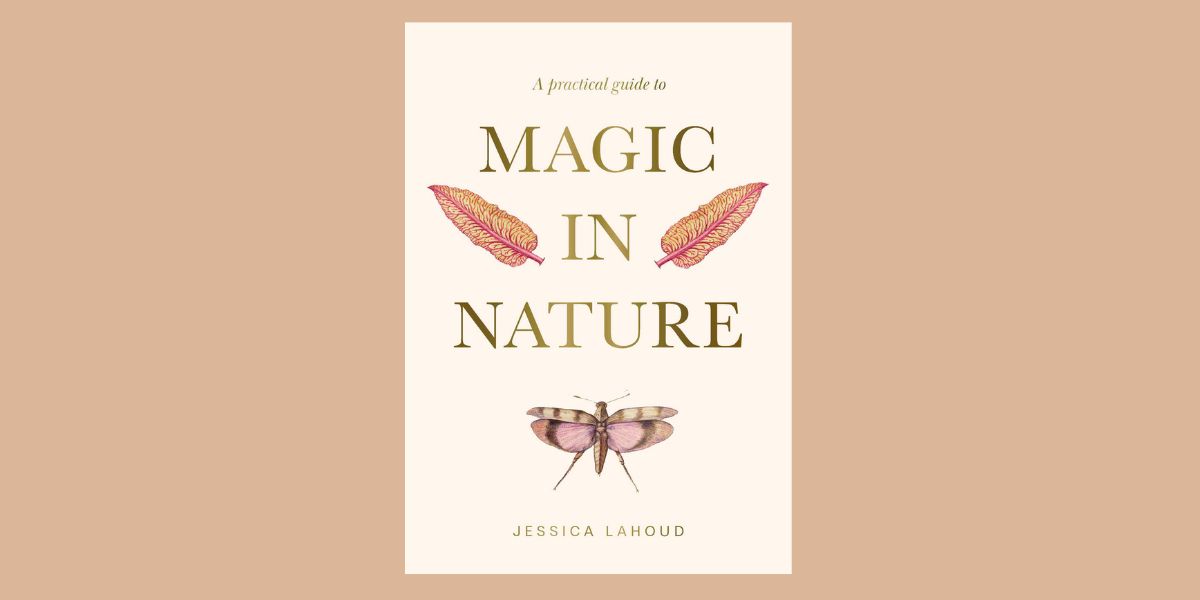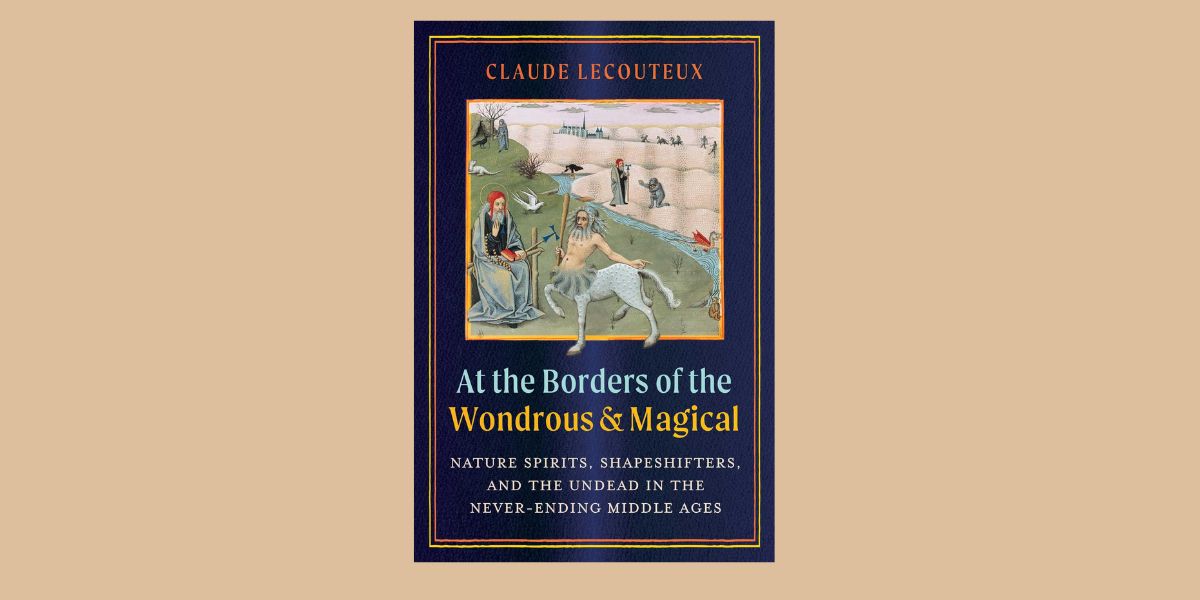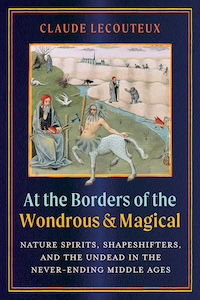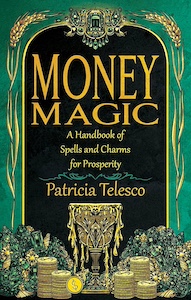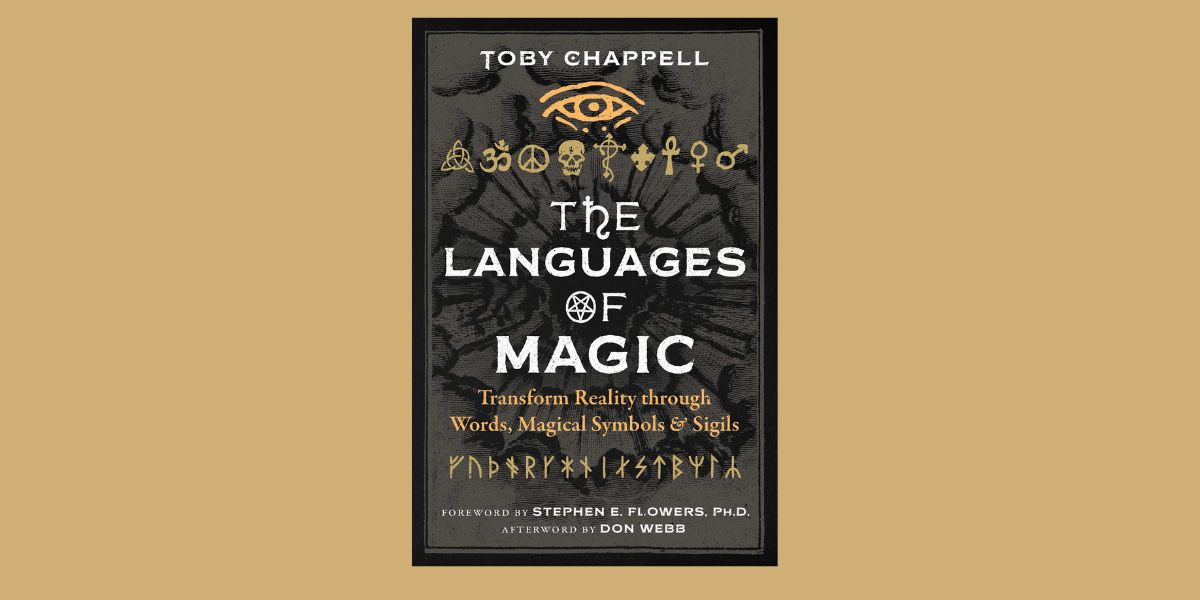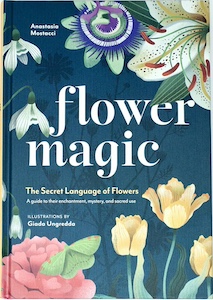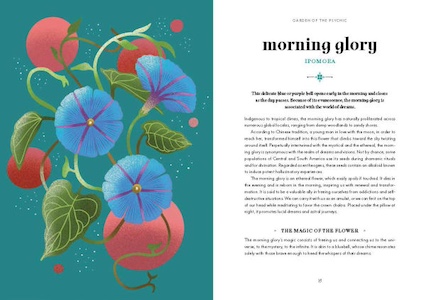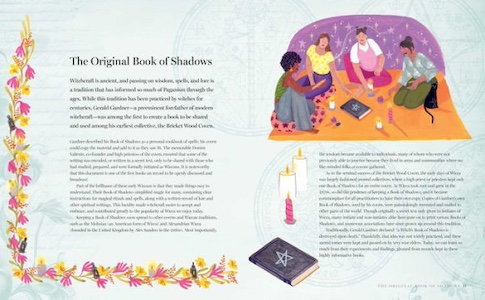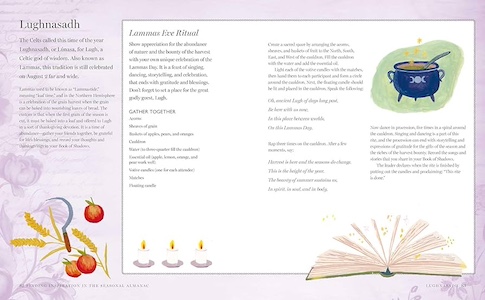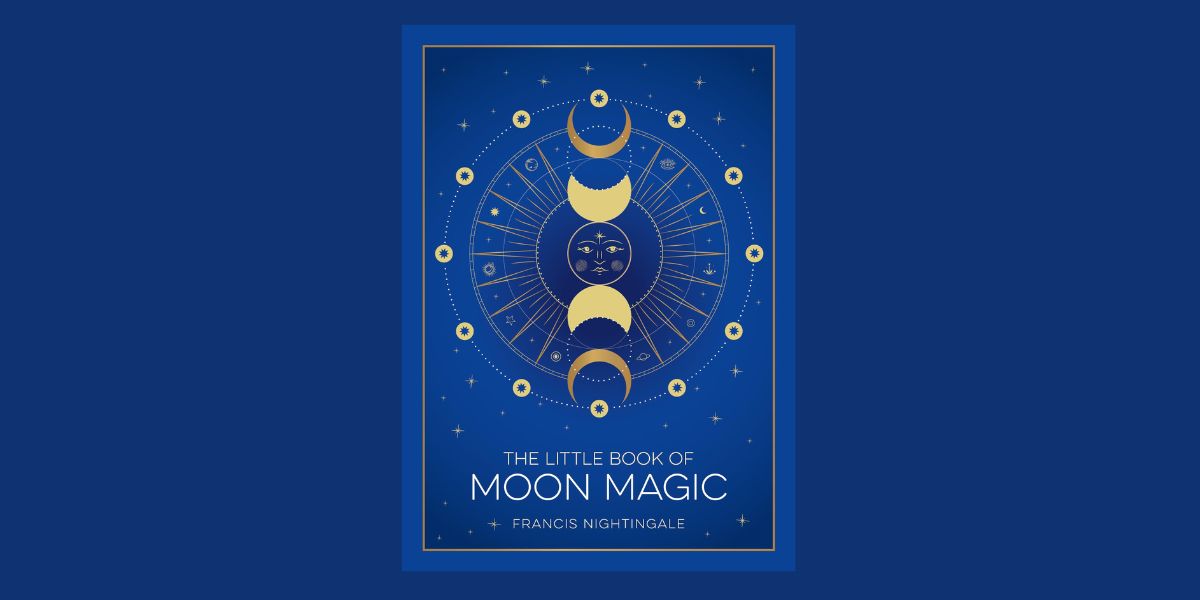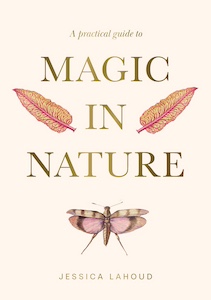
A Practical Guide to Magic in Nature, by Jessica Lahoud
Rockpool Publishing, 1922786497, 256 pages, July 2025
A Practical Guide to Magic in Nature by Jessica Lahoud is an enchanting exploration of the natural world through the lens of magic and spirituality. Lahoud invites readers to discover the mystical aspects of nature and learn how to incorporate them into their daily lives, teaching readers correspondences and connections to enhance their understanding of energetic properties . Covering a variety of topics and beautifully animated with brilliant illustrations, this lovely reference guide is a grounding reminder of the magic that can be found all around for those who open their eyes to see it.
“My hope is that this is the book you reach for when you are formulating your spells, the book that you reference when making sense of a magical experience you’ve had in nature, and the book you turn to when an animal messengers spears in a dream.”1
Sectioned into six parts, this book explores the material magic of earth and potent celestial influence of planets and stars, ultimately integrating both to introduce readers to their own personal agency and energy centers. This holistic approach brings a resonance of harmony and balance, merging the magic of land and sky within oneself to enhance one’s understanding of their place within the marvelous universe.
“Part 1: Crystals” includes a lovely introduction to crystal healing, which teaches readers how to care for and use their crystals. There is a whole crystal profile guide, spanning over 40 pages, that shares the corresponding organ/meridian, chakra, element for hundreds of crystals. The list also includes the Moss hardness and properties associated with the crystal. For each one, Lahoud shares a few sentences about how the crystal is best used. She also shares crystal combinations for a variety of desired effects (health and healing, joy, luck, balance). This would be perfect for making a little crystal bag to carry with you!
Next, “Part 2: Plant Magic” familiarizes readers with plant magic, focusing on the myriad of ways one can connect with the essence of plants: tea, essential oil blends, aromatherapy, cooking, tending to house plants, and so on. Similar to the crystal section, this section has plant profiles for herbs and spices, flowers and shrubs, fruits and vegetables, and roots, resins and woods. Within each profile, Lahoud highlights the corresponding celestial body, day, element, and chakra. She also shares the botanical name, whether the energy of the plant is active or nurturing, and magical powers of the plants, along with a few sentence description of how it is often used.
There is so much packed into this section! I really enjoyed learning about the fruit and vegetable energy profiles, as these are foods I eat on a regular basis. Avocado toast has been my go-to for breakfast, and it was fascinating to learn avocado is associated with Venus and the heart chakra. This is how Lahoud describes the usefulness of avocado:
“Avocado is associated with love and beauty. This nourishing fruit promotes good health and a strong heart, useful for attracting love and romance. Its richness is symbolic of its bountiful energy, useful for promoting abundance and prosperity.”2
Following suit, “Part 3: Animals” also shares a lengthy list of animal symbolism. Lahoud writes, “Animals are magical creatures of nature, and therefore they also often bring their own messages to you, guided by their innate wisdom.”3 In her list of over 50 animals, she shares keywords associated with the animal along with a message from the animal. Whether the animal appears to you in a dream or you feel called to know more about a certain animal, this section is extremely helpful in interpreting the message the animal spirit has for you. Some animals even include a ritual (ex. Chicken Wishbone Ritual) or recipe (Beeswax Candle Making).
Now that Lahoud has provided in-depth profiles of Earth’s natural magic, she turns towards the celestial bodies that influence readers magically too. “Part 4: Celestial Bodies” provides profiles for the planets in our solar system as well as the Sun and Moon. Each profile provides the corresponding day, color, element, metal, zodiac sign, angels and gods, plants, crystals, organs, and chakra with the celestial body. There’s also a few descriptive sentences about the body’s essence. The profiles for Uranus, Neptune, and Pluto, however, only include some of the profile correspondences since they are newer discoveries. This section also delves into moon phases for further insights.
“Part 5: The Elements” introduces each element, and then Lahoud teaches how one can work with them by noting ways to connect with the element and associations (tarot symbol, zodiac sign, color, season, and chakra). This is the briefest section, but it still yields useful guidance.
Finally, “Part 6: The Magic in You” brings different energy tools together to teach readers how to be more attuned to their own magic within. I love how Lahoud frames this:
“Recognizing the magic in nature is a step towards understanding your own magic. Just as the universe is a vast cosmos of stardust, water, carbon and more, you too are composed of these same fundamental elements. This is a kind of cosmic kinship.”4
In this section, she teaches how to clear one’s energy and tools one can use (pendulum, candles, crystals) for this purpose. Lahoud then delves into the chakras, providing a profile that shares their corresponding organ, day, planet, color, and an affirmation, along with ways to balance one’s chakras. She also shares profiles for the medians, or “invisible pathways in your body that carry life-force energy,”5, nothing whether they are yin or yang and the corresponding emotions, elements, season, color, timing, and foods that support the meridian. Lastly, there’s a page dedicated to the meaning of different aura colors.
While this book is clearly filled with so much useful information, what really makes it stand out is the many illustrations throughout that make the text feel alive. The illustrations provide immensely pleasing visual stimulation and make it so the text never feels dense or overwhelming. It’s one thing to read the word, but it’s a whole other level to see it come to life on the page. This book is a true beauty, drawing the reader back to it again and again.
Overall, A Practical Guide to Magic in Nature is a delightful addition to the library of anyone interested in the intersection of nature and spirituality. Lahoud has made this book a one-stop reference guide that is so detailed and inclusive readers will have all they need within it. There’s so many ways one can use this book, whether they simply want to learn more about the natural world or are looking to deepen their magical practice by furthering their knowledge of correspondences. The balance between practicality and spirituality makes it a wonderful resource for nature lovers and nature-based magic practitioners alike. All who read this book will surely enjoy the vivid depictions of the natural world and the treasure trove of wisdom imparted throughout.
Alanna Kali is an astrologer, numerologist, and pioneer spirit that loves to explore life through the lens of depth psychology. She has a passion for studying the humanities and social trends. Her academic work is centered upon reuniting body, mind, and spirit through eco-psychology. She loves reading, spending time in nature, and travel.
